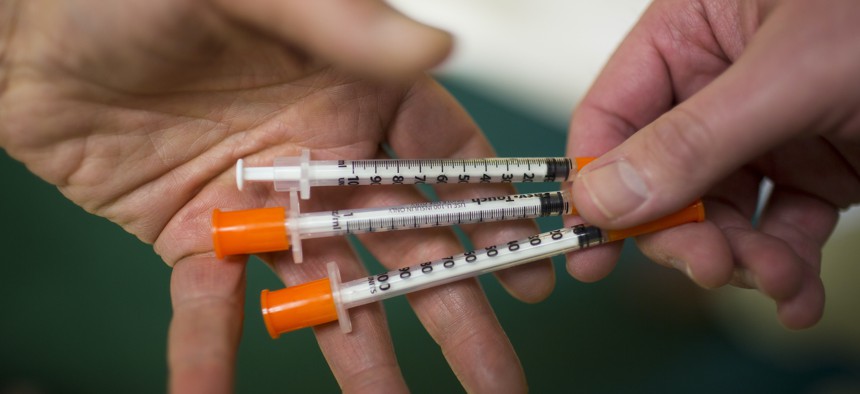Healthcare
Opinion: New York State is ready for statewide injection sites

Robert Nickelsberg_Getty Images
Usually, an A grade would be seen as a measure of a job well done. However, when it comes to progress toward hepatitis elimination, New York is only now getting back on track. The Empire State has work to do in order to regain our status as national leaders in this effort. As evaluated by Hep ElimiNATION, a joint project of the O’Neill Institute for National and Global Health Law at Georgetown University Law Center, the National Viral Hepatitis Roundtable, and the Center for Health Law and Policy Innovation at Harvard Law School, New York’s A grade comes with caveats, specifically a lack of dedicated, sufficient funding for proactive case finding, linkage to care and harm reduction services for New Yorkers living with and at risk of developing viral hepatitis.
Hepatitis C is one of the deadliest infectious diseases in the United States, killing more annually than all other infectious diseases combined, except COVID-19. Around 3.5 million people in the country suffer from chronic infection, including over 100,000 living in New York State. They are disproportionately poor, people of color, people who have been incarcerated and people who use drugs. Hepatitis C has been fully curable for nearly a decade, but far too many patients still face obstacles accessing lifesaving treatment: achieving just outcomes for them demands a multi-pronged approach.
The New York Hepatitis C Elimination Task Force has identified several such areas for policy improvement, outlining potential action steps within each. We need to broadly implement proven strategies to prevent hepatitis C (HCV) infection before it happens, including expanded access to syringe service program, peer outreach to people who inject drugs and people experiencing homelessness, and prevention and treatment measures within correctional facilities. Next, we must strengthen our testing and care infrastructure serving those already infected, through interventions such as ensuring pregnant people are screened for HCV during each pregnancy, testing and treatment in non-traditional healthcare settings, and enforcement of recent policy changes that removed prior authorization requirements for HCV medication among Medicaid patients. Finally, we must better serve all the needs of those most vulnerable to viral hepatitis through initiatives to address social determinants of health including unstable housing and employment.
With up to 75% of people who use drugs having been exposed to hepatitis C, the principles of harm reduction must form the foundation of New York’s strategy to eliminate the virus, building upon syringe services programs. For this, New York City has taken a bold step forward with the country’s very first legally operating overdose prevention centers, which provide people a safe environment to inject drugs under medical supervision and get connected with supportive social and health services. For many people at risk of both overdoses and hepatitis infection, these centers can not only become vital sites for accessing hepatitus C information, testing and treatment, but for other sorely needed health resources - like primary care, sexual and mental health needs and tools for addressing substance use. New York City’s two overdose prevention centers are already saving lives, and New Yorkers throughout and outside the city deserve a plan for bringing more of these services well beyond the disenfranchised neighborhoods they currently operate in.
But despite the impressive global track record of overdose prevention centers - to date there has not been a fatal overdose in a supervised injection site - and their potential for serving some of the most difficult-to-reach communities, the U.S. has remained indefensibly resistant to implementing them. Along with state and local bans against syringe services programs across the country, this rejection of evidence-based public health interventions continues to undermine efforts to eliminate viral hepatitis, and does a grave disservice to the people most affected by the virus.
Ultimately, opening overdose prevention centers across the entire state can help us make great strides against the syndemic of overdose, hepatitis C and HIV. If we invest in them alongside other policies identified by the Hepatitis C Elimination Task Force, we can ensure New York State truly earns its A grade - and finally end this preventable, curable infection for good.
NEXT STORY: Rethinking how nonprofits pay their workforce
